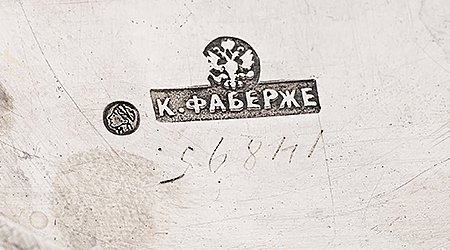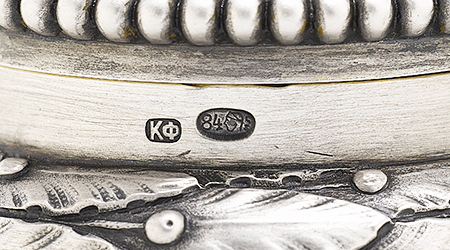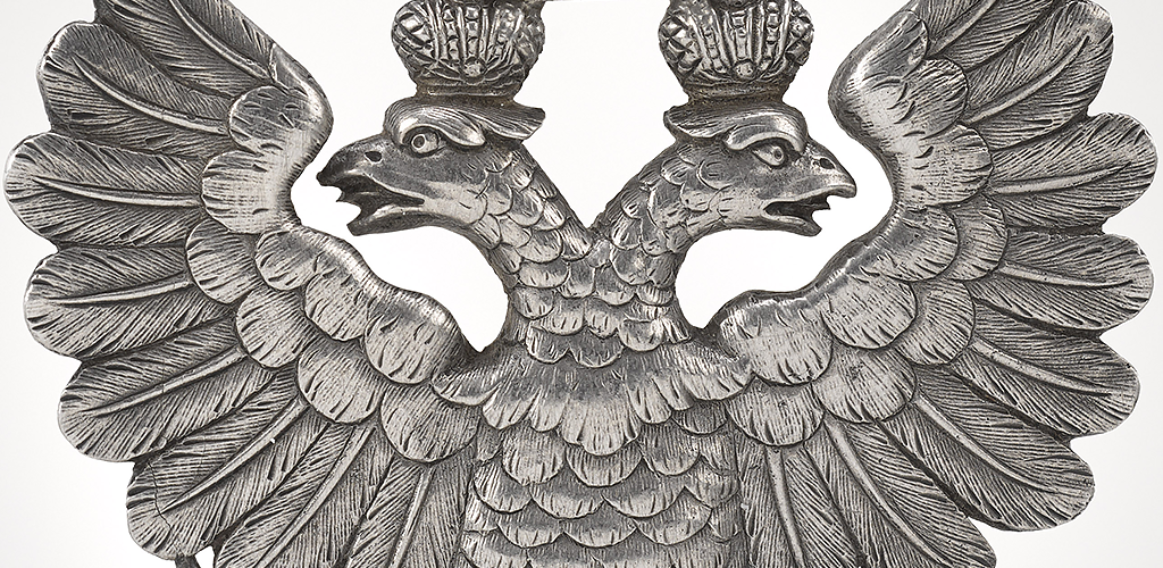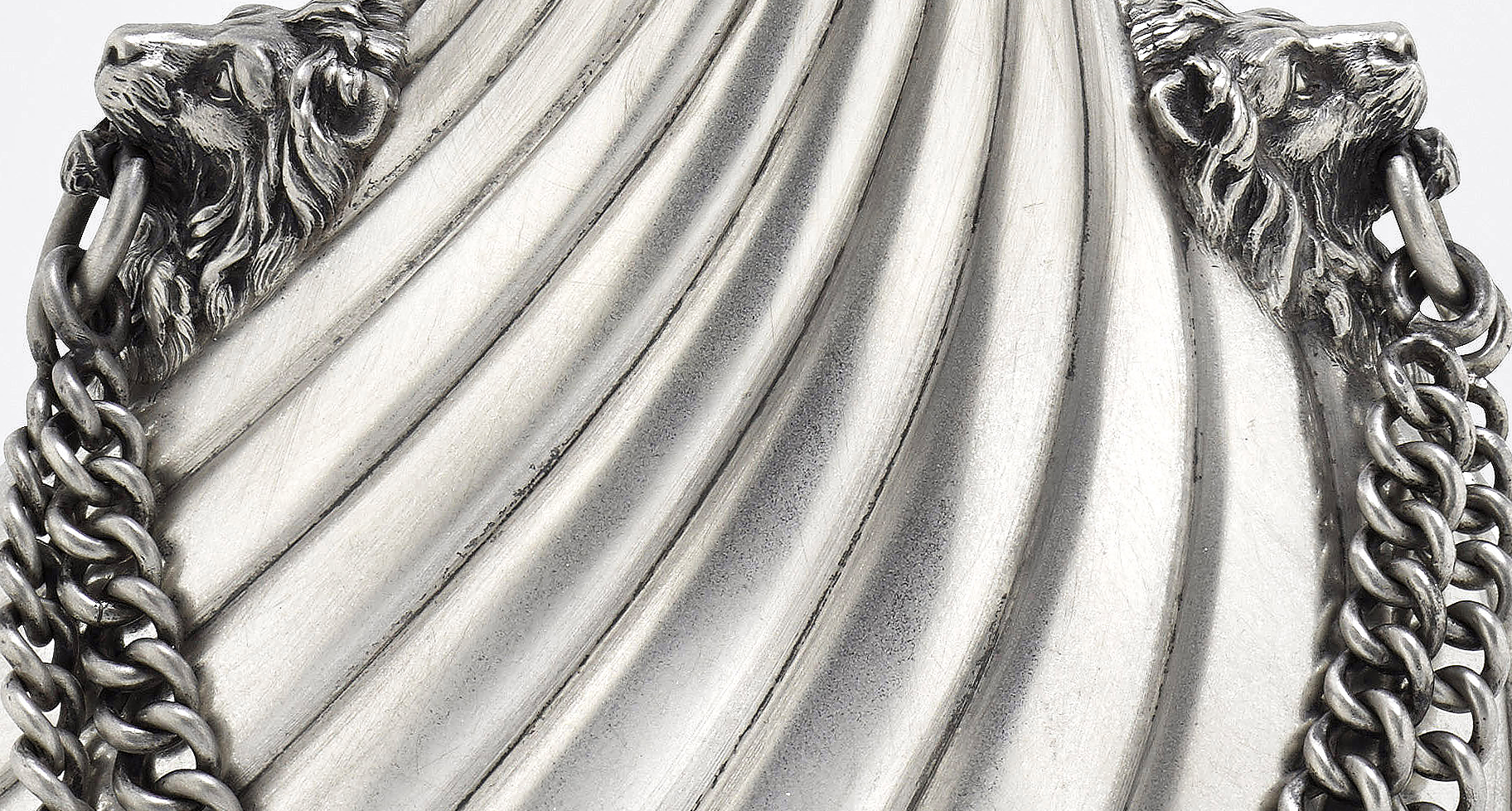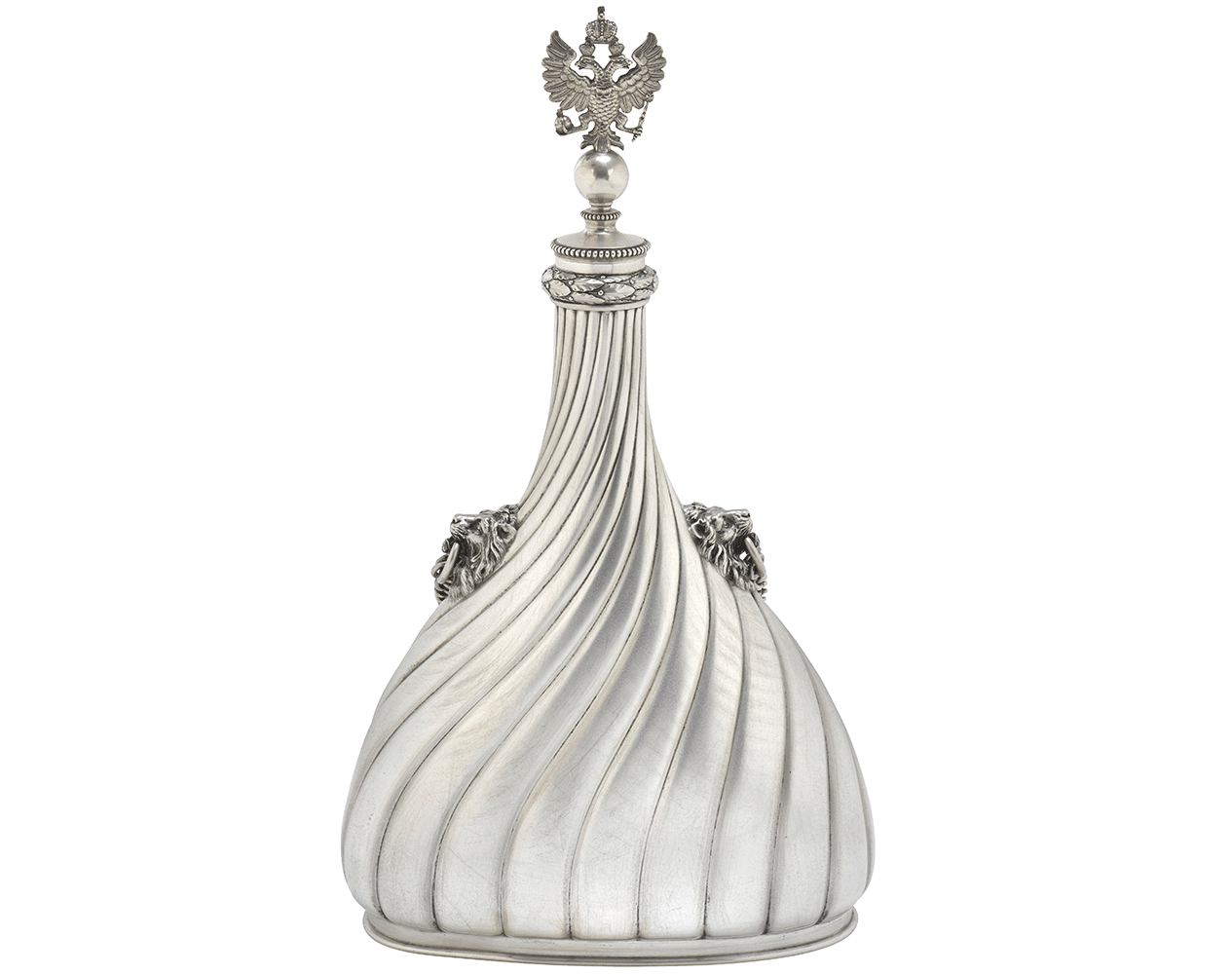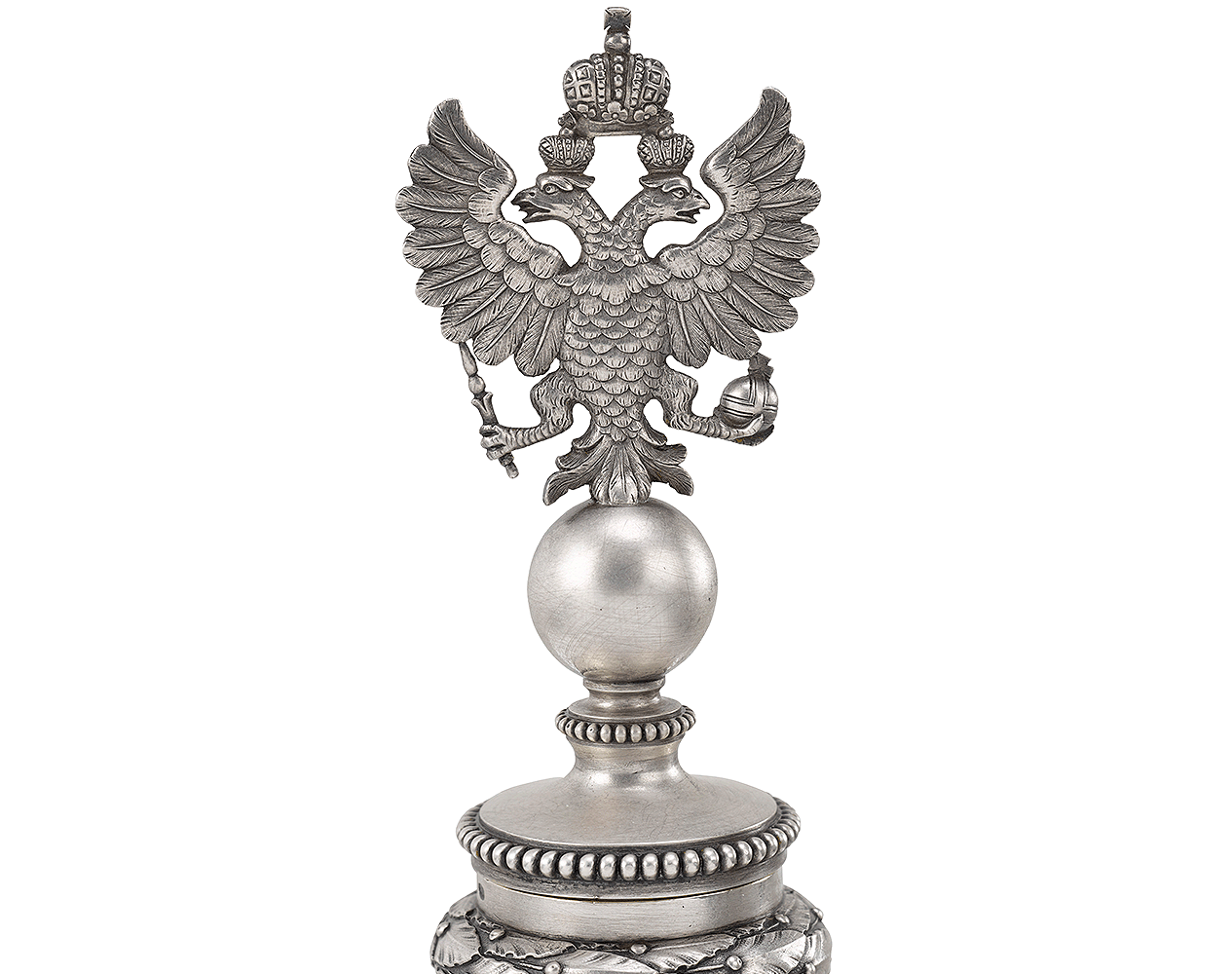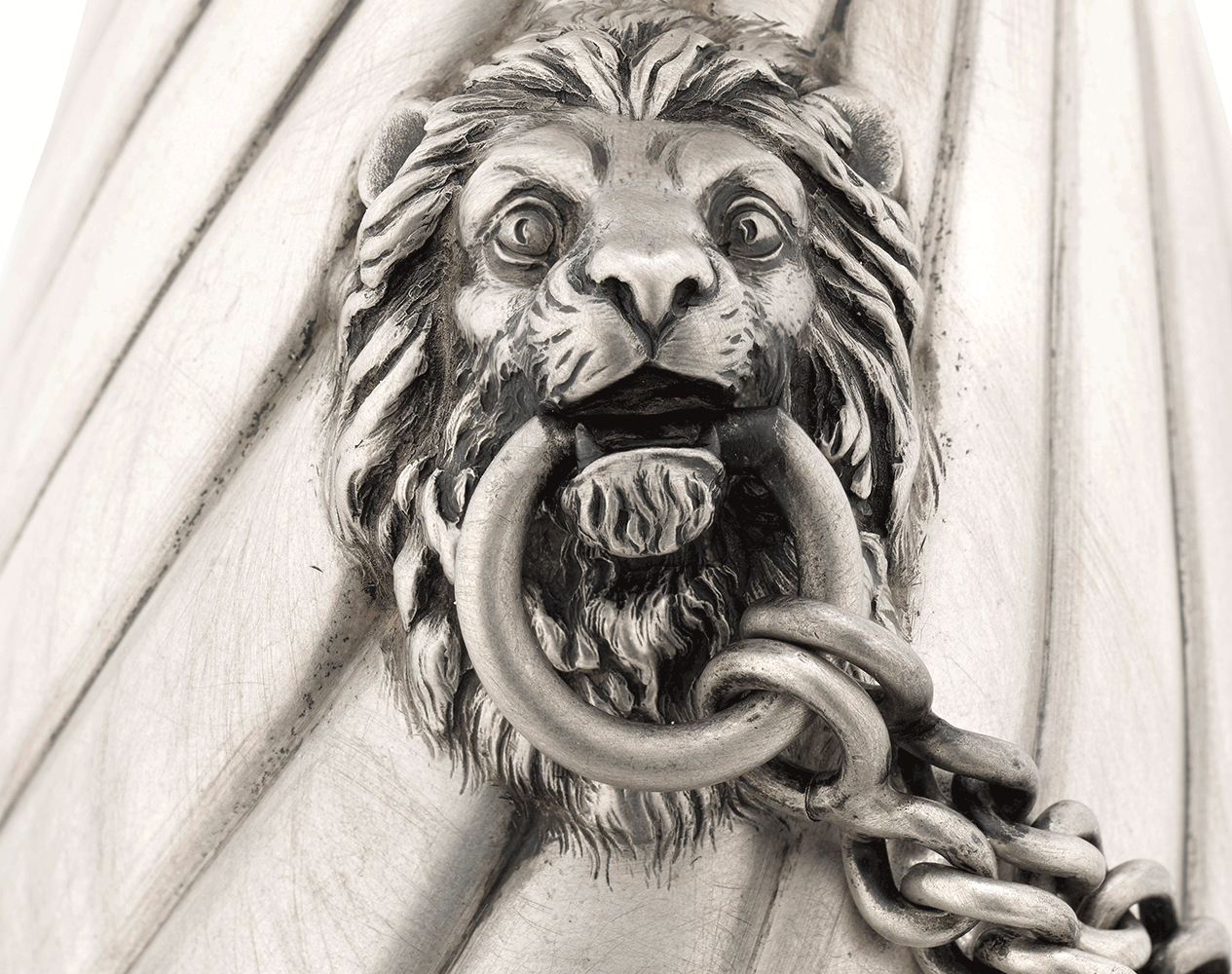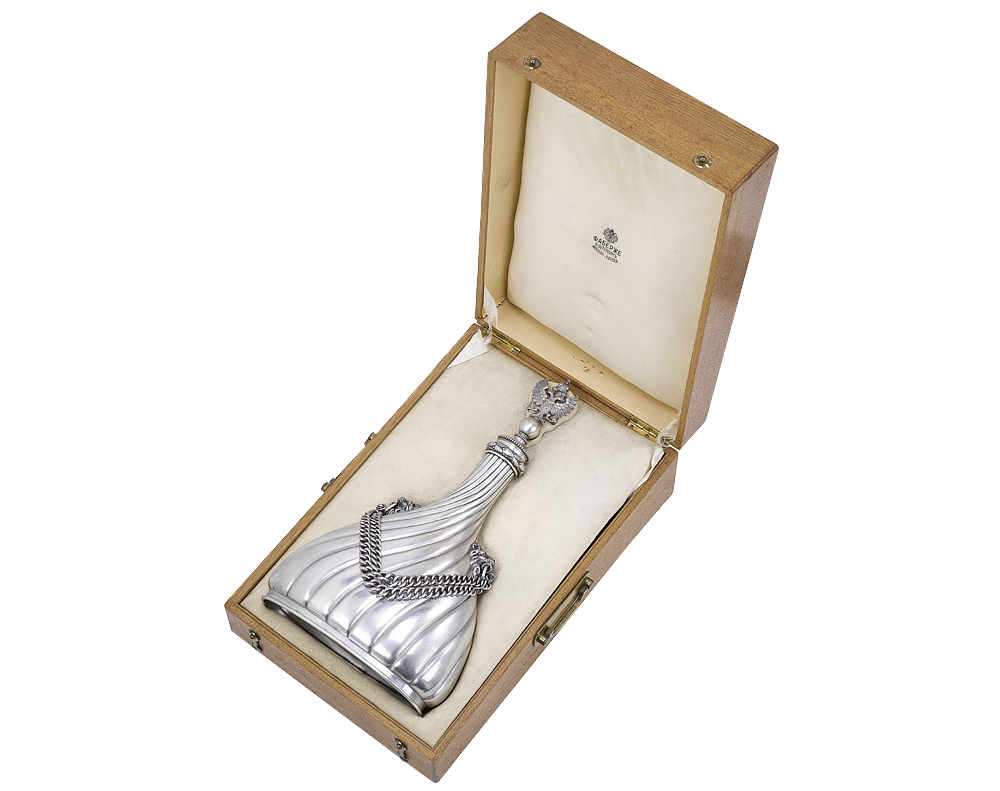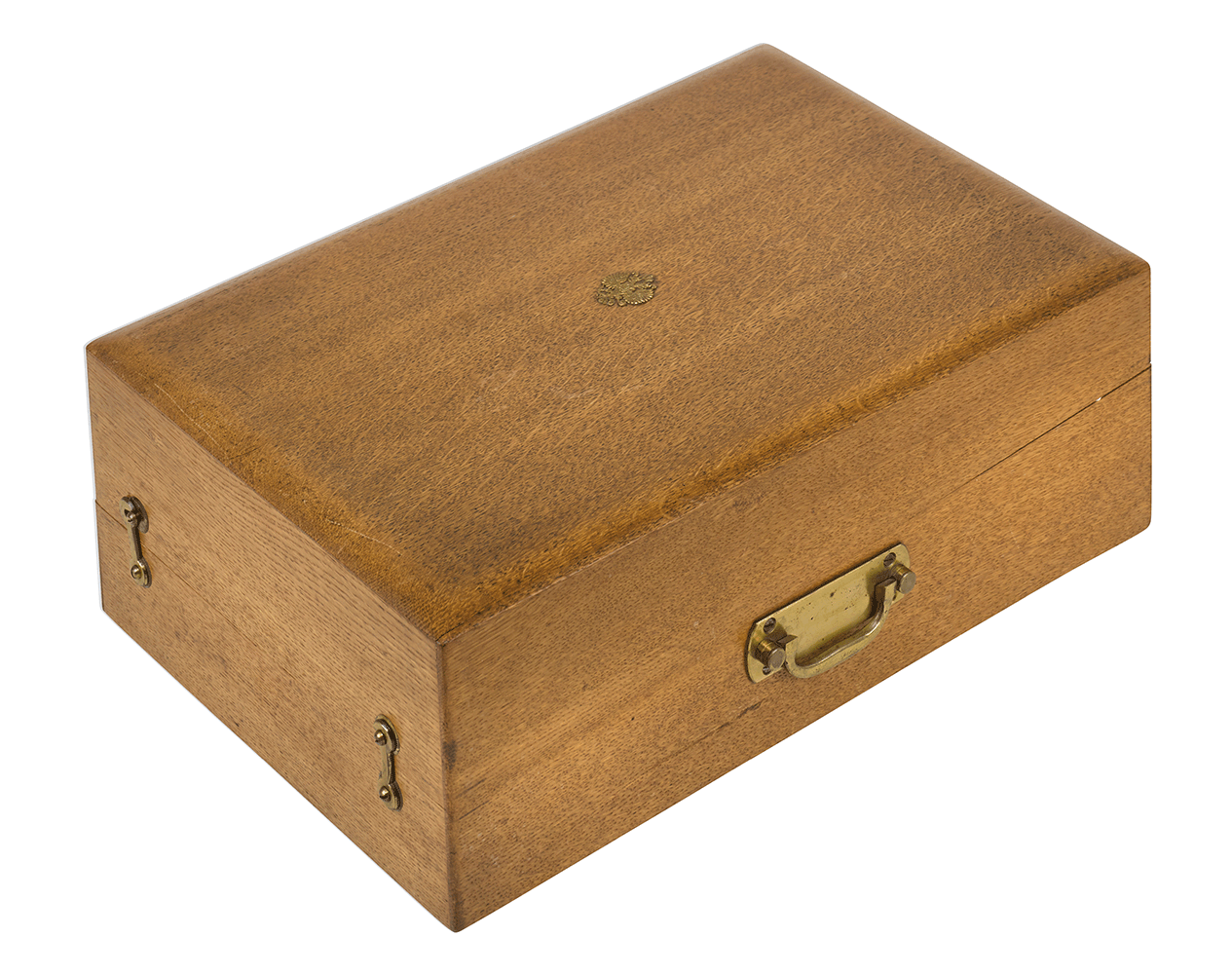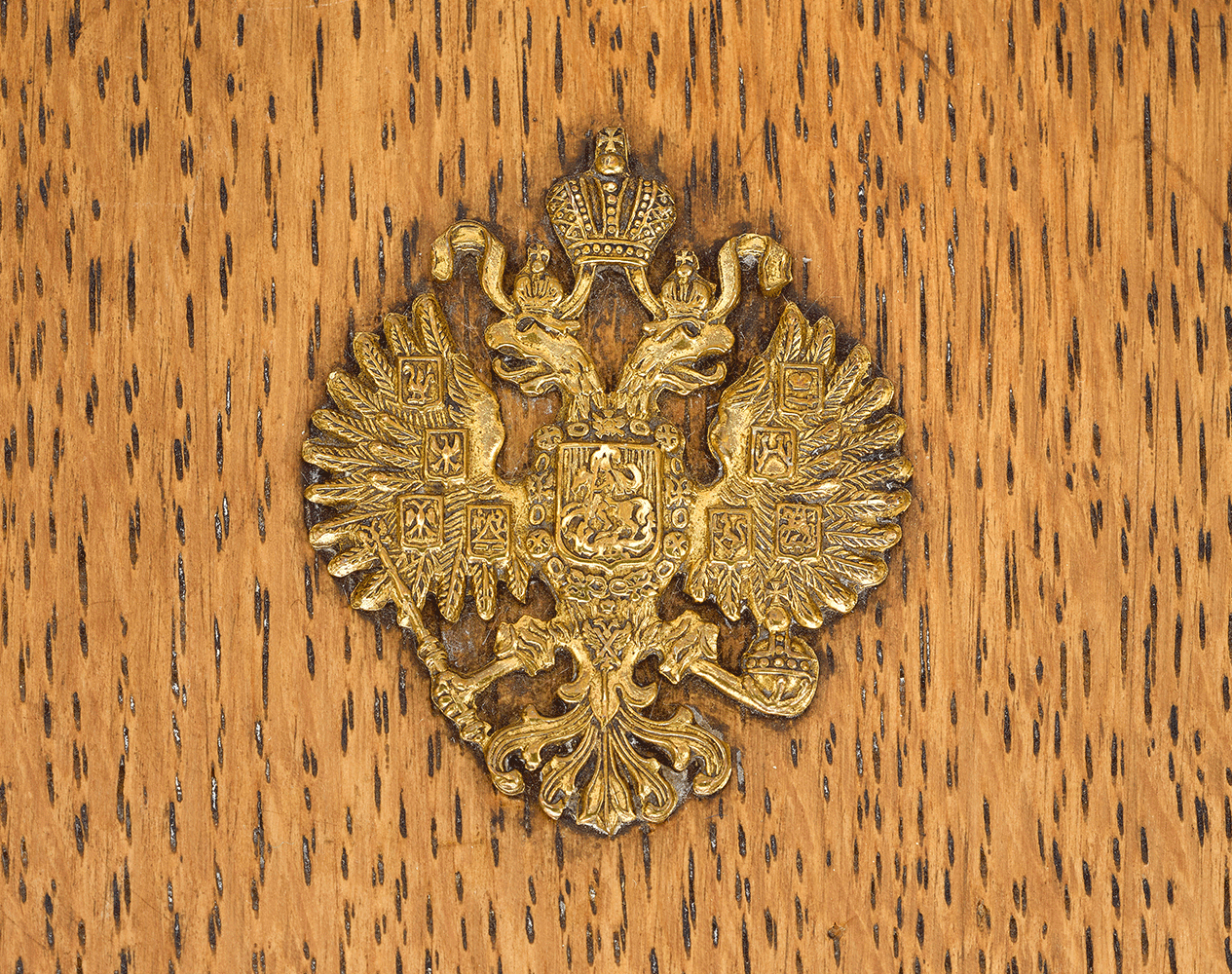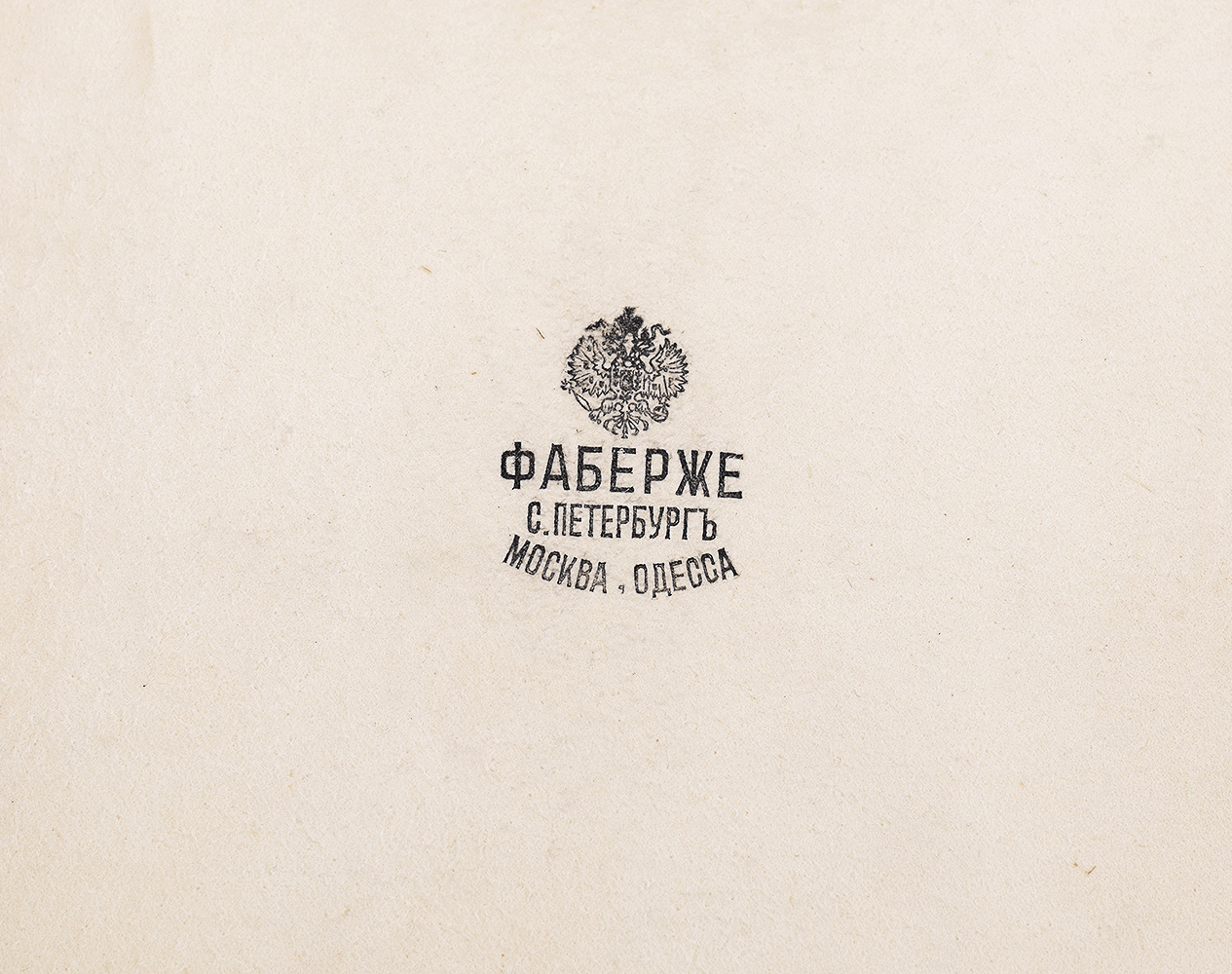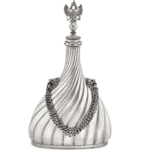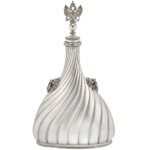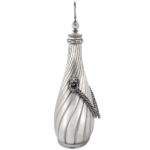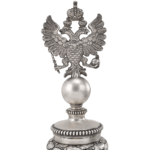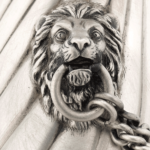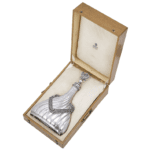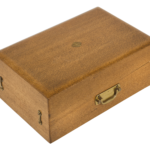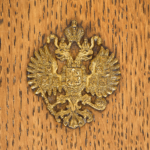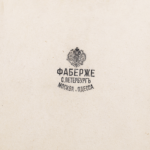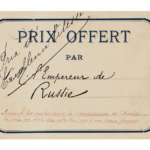A large silver fluted pear-shaped flask on an oval moulded foot. The shoulders are applied with lion masks from which a chain is suspended. Under the rim runs a band of stylised laurel leaves. The cover is mounted with the Russian Imperial double-headed eagle. The flask was presented as an honorary award by the Russian Emperor to the winner of a shooting competition.
The shape of the object derives from traditional pilgrim flasks, or ampullae. In Antiquity and in the early Middle Ages, this type of vessel was used to carry home oils and holy water from great pilgrimage sites across Europe, the Byzantine Empire and the Holy Land. Later, the form was used by decorative artists and became popular as a symbol of piety and good fortune.
Particularly grand silver flasks were produced in England throughout the late 17th – 19th century. Many of the later examples were presentation pieces from the Royal Families of Europe. Similar flasks were presented by the Royal Families of Greece and Denmark to Tsar Alexander III on his marriage to Maria Fyodorovna in 1866.
